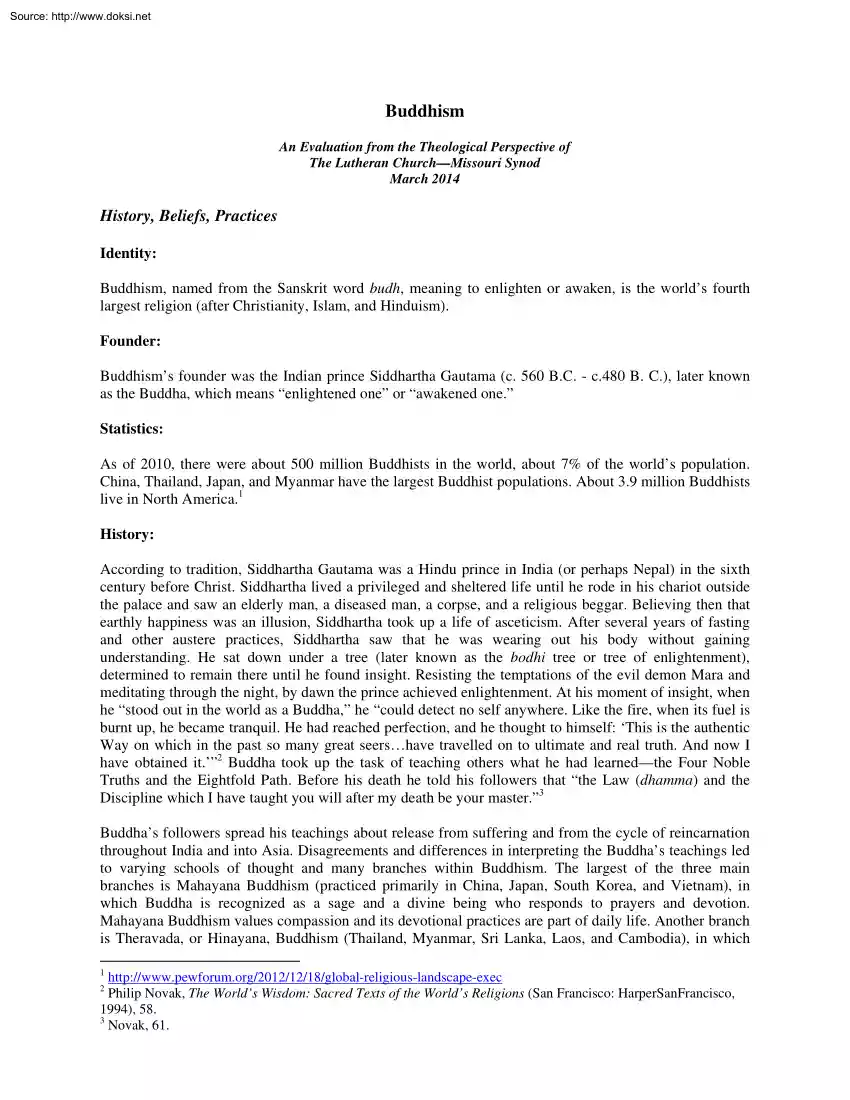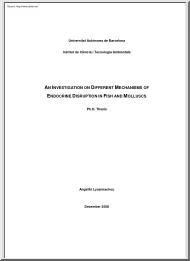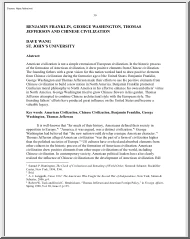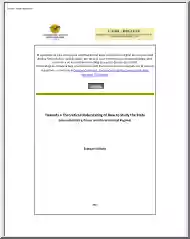A doksi online olvasásához kérlek jelentkezz be!

A doksi online olvasásához kérlek jelentkezz be!
Nincs még értékelés. Legyél Te az első!
Mit olvastak a többiek, ha ezzel végeztek?
Tartalmi kivonat
Source: http://www.doksinet Buddhism An Evaluation from the Theological Perspective of The Lutheran ChurchMissouri Synod March 2014 History, Beliefs, Practices Identity: Buddhism, named from the Sanskrit word budh, meaning to enlighten or awaken, is the world’s fourth largest religion (after Christianity, Islam, and Hinduism). Founder: Buddhism’s founder was the Indian prince Siddhartha Gautama (c. 560 BC - c480 B C), later known as the Buddha, which means “enlightened one” or “awakened one.” Statistics: As of 2010, there were about 500 million Buddhists in the world, about 7% of the world’s population. China, Thailand, Japan, and Myanmar have the largest Buddhist populations. About 39 million Buddhists live in North America.1 History: According to tradition, Siddhartha Gautama was a Hindu prince in India (or perhaps Nepal) in the sixth century before Christ. Siddhartha lived a privileged and sheltered life until he rode in his chariot outside the palace and saw an
elderly man, a diseased man, a corpse, and a religious beggar. Believing then that earthly happiness was an illusion, Siddhartha took up a life of asceticism. After several years of fasting and other austere practices, Siddhartha saw that he was wearing out his body without gaining understanding. He sat down under a tree (later known as the bodhi tree or tree of enlightenment), determined to remain there until he found insight. Resisting the temptations of the evil demon Mara and meditating through the night, by dawn the prince achieved enlightenment. At his moment of insight, when he “stood out in the world as a Buddha,” he “could detect no self anywhere. Like the fire, when its fuel is burnt up, he became tranquil. He had reached perfection, and he thought to himself: ‘This is the authentic Way on which in the past so many great seershave travelled on to ultimate and real truth. And now I have obtained it.’”2 Buddha took up the task of teaching others what he had
learnedthe Four Noble Truths and the Eightfold Path. Before his death he told his followers that “the Law (dhamma) and the Discipline which I have taught you will after my death be your master.”3 Buddha’s followers spread his teachings about release from suffering and from the cycle of reincarnation throughout India and into Asia. Disagreements and differences in interpreting the Buddha’s teachings led to varying schools of thought and many branches within Buddhism. The largest of the three main branches is Mahayana Buddhism (practiced primarily in China, Japan, South Korea, and Vietnam), in which Buddha is recognized as a sage and a divine being who responds to prayers and devotion. Mahayana Buddhism values compassion and its devotional practices are part of daily life. Another branch is Theravada, or Hinayana, Buddhism (Thailand, Myanmar, Sri Lanka, Laos, and Cambodia), in which 1 http://www.pewforumorg/2012/12/18/global-religious-landscape-exec Philip Novak, The World’s
Wisdom: Sacred Texts of the World’s Religions (San Francisco: HarperSanFrancisco, 1994), 58. 3 Novak, 61. 2 Source: http://www.doksinet 2 wisdom is valued and religious practices are often a full time occupation, primarily for monks.4 Another form is Vajrayana or Tibetan Buddhism (Tibet, Nepal, Bhutan, and Mongolia), with devotional practices that include the use of a mantra or sacred sound, ritual gestures and postures, and mandalas (sacred diagrams) in meditation. A combination of Mahayana Buddhism and Taoism produced Zen Buddhism, a form that emphasizes meditation and the affirmation of one’s existence in the present moment. Texts: Important texts vary within the different branches of Buddhism, but include the Pali Canon, the Mahayana Sutras, the Chinese Buddhist canon, and the Tibetan Book of the Dead. Buddhist scriptures may include the words of Buddha or the teachings of his disciples. Beliefs and Practices: Teachings and practices vary among the many branches of Buddhism,
and some consider it a philosophy of life rather than a religion. Buddhism does not promote the worship of any particular gods, although some followers view Buddha as divine. Buddhism accepts the Hindu teachings of karma (moral acts and corresponding consequences) and reincarnation; individuals pass from one incarnation to the next based on behavior in the previous life. In similar fashion, when the present universe is dissolved, still another universe will rise up from the same matter. An important Buddhist concept is impermanence or illusion: “The whole of the cosmos that presents itself to sense perception is in a state of continual flux. All things, without exception, are impermanent and pass away in the course of time.”5 According to Buddhism, life is filled with suffering because the unenlightened person clings to that which is illusory or impermanent. The individual must achieve a state of composure, tranquil and free of cravings. The goal of existence is to pass beyond all
craving or desire into nirvana, which means extinction or nothingness, as when a candle flame is blown out. This is a condition beyond thought, feeling, and will that Buddha called “bliss.” Nirvana is peace, the end of craving, aging, dying, and rebirth. Buddha followed “the Middle Way,” avoiding the extremes of affluence and asceticism. He believed “that by the Four Noble Truths and the Eightfold Path there is a power strong enough to break the chains [of reincarnation] and liberate the believer immediately in a single moment of insight.”6 The Four Noble Truths address the problem of dukkha, or suffering. The First Noble Truth is that everything (birth, aging, sickness, despair, and death) is suffering. According to the Second Noble Truth, the origin of suffering is desire, which makes people cling to existence and crave gratification. The Third Noble Truth explains that a person can be delivered from suffering by letting go of desire. The Fourth Noble Truth is that “the
Eightfold Path” leads to the end of suffering. Following the Eightfold Path, a way of life rather than successive steps, an individual seeks right understanding (of the four Noble Truths), right intention (the aim to renounce desire), right speech (speaking pleasantly and abstaining from lies and unkindness), right action (helping others and abstaining from wrong), right livelihood (earning a living that does not harm others), right effort (achieving a good mental state and eliminating evil), right mindfulness (awareness of one’s body and mental state), and right concentration (finding peace by removing emotion). 4 Here, Buddha is not worshipped but viewed as a pioneer, whose example of insightful and disciplined living is to be emulated. 5 Anthony J. Steinbronn, Worldviews: A Christian Response to Religious Pluralism (St Louis: CPH, 2007), 45 6 Steinbronn, 46. Source: http://www.doksinet 3 Each individual must examine his own feelings and conquer his cravings. Buddha told his
followers, “Hold firm to the truth as a lamp and a refuge and do not look for refuge to anything besides yourselves.”7 However, many followers recite daily the “Three Jewels,” finding help in the example of Buddha, his teachings, and the guidance of the monastic community: “I take refuge in the Buddha. I take refuge in the dharma [the teachings of Buddha]. I take refuge in the sangha [the monastic order]”8 Buddha’s followers are to value benevolence, compassion, and composure. Monks and lay people should follow the Ten Precepts, of which five are basic moral observances: abstain from injuring living things, from stealing, from sexual immorality, from falsehood, and from the use of alcohol or drugs. Three additional moral observances are abstention from taking food after midday, from dancing, singing, and amusements, and from the use of cosmetics and personal adornments. According to two additional precepts, one should refrain from accepting gold or silver and from the use
of a luxurious bed.9 According to tradition, Buddha’s last words were, “Impermanent are all formations. Observe this carefully, constantly.”10 A Lutheran Response: As Christians we know that life and the created world are not illusory, but gifts of our Creator, the Triune God, Father, Son, and Holy Spirit (Genesis 1:1; John 1:3). Although subject to suffering and death because of sinrebellion against our Creatorhuman beings are not doomed to an endless cycle of death and rebirth. Scripture teaches that “it is appointed for man to die once, and after that comes judgment” (Hebrews 9:27). All who trust in Jesus for salvation receive forgiveness and eternal life in His name, and on the Last Day they will be raised up bodily from death to live forever in His presence (John 6:40; 1 Corinthians 15:22). On that Day “the creation itself will be set free from its bondage to corruption and obtain the freedom of the glory of the children of God” (Romans 8:21). There is suffering in
this world, and Christians experience that suffering. However, peace is not found in extinction or “nothingness,” but in Jesus Christ, who said, “In the world you will have tribulation. But take heart; I have overcome the world” (John 16:33). We know that even in suffering, for those who belong to Christ, “all things work together for good” according to God’s gracious will (Romans 8:28). Christians, too, seek to avoid the temptations that may be found in either affluence or asceticism (Proverbs 30:7-9; Romans 14:5-6; 1 Timothy 6:8-10; Colossians 2:16-19). Many of the Ten Precepts and “right” behaviors of Buddhism are commendable, reflecting the law of God written on the hearts of all people (Romans 2:15). As Christians, nourished by Word and Sacrament, we walk in the good works that God has prepared for us to do (Ephesians 2:8-10). However, no “Middle Way”no human path or effort of any kindcan lead to salvation. We are saved only by God’s grace through faith in
Jesus Christ, who alone is “the way and the truth and the life” (John 14:6). For Further Reading: Francisco, Adam. One God, Many Gods St Louis: CPH, 2008 Lochhaas, Philip H. How to Respond to the Eastern Religions St Louis: CPH, 1979 Steinbronn, Anthony J. Worldviews: A Christian Response to Religious Pluralism St Louis: CPH, 2007. 7 Novak, 61. Steinbronn, 129. Dharma (in Sanskrit; dhamma in the Pali language) can refer to cosmic order or to the teachings of Buddha. 9 Steinbronn, 102-103. 10 Novak, 62. 8
elderly man, a diseased man, a corpse, and a religious beggar. Believing then that earthly happiness was an illusion, Siddhartha took up a life of asceticism. After several years of fasting and other austere practices, Siddhartha saw that he was wearing out his body without gaining understanding. He sat down under a tree (later known as the bodhi tree or tree of enlightenment), determined to remain there until he found insight. Resisting the temptations of the evil demon Mara and meditating through the night, by dawn the prince achieved enlightenment. At his moment of insight, when he “stood out in the world as a Buddha,” he “could detect no self anywhere. Like the fire, when its fuel is burnt up, he became tranquil. He had reached perfection, and he thought to himself: ‘This is the authentic Way on which in the past so many great seershave travelled on to ultimate and real truth. And now I have obtained it.’”2 Buddha took up the task of teaching others what he had
learnedthe Four Noble Truths and the Eightfold Path. Before his death he told his followers that “the Law (dhamma) and the Discipline which I have taught you will after my death be your master.”3 Buddha’s followers spread his teachings about release from suffering and from the cycle of reincarnation throughout India and into Asia. Disagreements and differences in interpreting the Buddha’s teachings led to varying schools of thought and many branches within Buddhism. The largest of the three main branches is Mahayana Buddhism (practiced primarily in China, Japan, South Korea, and Vietnam), in which Buddha is recognized as a sage and a divine being who responds to prayers and devotion. Mahayana Buddhism values compassion and its devotional practices are part of daily life. Another branch is Theravada, or Hinayana, Buddhism (Thailand, Myanmar, Sri Lanka, Laos, and Cambodia), in which 1 http://www.pewforumorg/2012/12/18/global-religious-landscape-exec Philip Novak, The World’s
Wisdom: Sacred Texts of the World’s Religions (San Francisco: HarperSanFrancisco, 1994), 58. 3 Novak, 61. 2 Source: http://www.doksinet 2 wisdom is valued and religious practices are often a full time occupation, primarily for monks.4 Another form is Vajrayana or Tibetan Buddhism (Tibet, Nepal, Bhutan, and Mongolia), with devotional practices that include the use of a mantra or sacred sound, ritual gestures and postures, and mandalas (sacred diagrams) in meditation. A combination of Mahayana Buddhism and Taoism produced Zen Buddhism, a form that emphasizes meditation and the affirmation of one’s existence in the present moment. Texts: Important texts vary within the different branches of Buddhism, but include the Pali Canon, the Mahayana Sutras, the Chinese Buddhist canon, and the Tibetan Book of the Dead. Buddhist scriptures may include the words of Buddha or the teachings of his disciples. Beliefs and Practices: Teachings and practices vary among the many branches of Buddhism,
and some consider it a philosophy of life rather than a religion. Buddhism does not promote the worship of any particular gods, although some followers view Buddha as divine. Buddhism accepts the Hindu teachings of karma (moral acts and corresponding consequences) and reincarnation; individuals pass from one incarnation to the next based on behavior in the previous life. In similar fashion, when the present universe is dissolved, still another universe will rise up from the same matter. An important Buddhist concept is impermanence or illusion: “The whole of the cosmos that presents itself to sense perception is in a state of continual flux. All things, without exception, are impermanent and pass away in the course of time.”5 According to Buddhism, life is filled with suffering because the unenlightened person clings to that which is illusory or impermanent. The individual must achieve a state of composure, tranquil and free of cravings. The goal of existence is to pass beyond all
craving or desire into nirvana, which means extinction or nothingness, as when a candle flame is blown out. This is a condition beyond thought, feeling, and will that Buddha called “bliss.” Nirvana is peace, the end of craving, aging, dying, and rebirth. Buddha followed “the Middle Way,” avoiding the extremes of affluence and asceticism. He believed “that by the Four Noble Truths and the Eightfold Path there is a power strong enough to break the chains [of reincarnation] and liberate the believer immediately in a single moment of insight.”6 The Four Noble Truths address the problem of dukkha, or suffering. The First Noble Truth is that everything (birth, aging, sickness, despair, and death) is suffering. According to the Second Noble Truth, the origin of suffering is desire, which makes people cling to existence and crave gratification. The Third Noble Truth explains that a person can be delivered from suffering by letting go of desire. The Fourth Noble Truth is that “the
Eightfold Path” leads to the end of suffering. Following the Eightfold Path, a way of life rather than successive steps, an individual seeks right understanding (of the four Noble Truths), right intention (the aim to renounce desire), right speech (speaking pleasantly and abstaining from lies and unkindness), right action (helping others and abstaining from wrong), right livelihood (earning a living that does not harm others), right effort (achieving a good mental state and eliminating evil), right mindfulness (awareness of one’s body and mental state), and right concentration (finding peace by removing emotion). 4 Here, Buddha is not worshipped but viewed as a pioneer, whose example of insightful and disciplined living is to be emulated. 5 Anthony J. Steinbronn, Worldviews: A Christian Response to Religious Pluralism (St Louis: CPH, 2007), 45 6 Steinbronn, 46. Source: http://www.doksinet 3 Each individual must examine his own feelings and conquer his cravings. Buddha told his
followers, “Hold firm to the truth as a lamp and a refuge and do not look for refuge to anything besides yourselves.”7 However, many followers recite daily the “Three Jewels,” finding help in the example of Buddha, his teachings, and the guidance of the monastic community: “I take refuge in the Buddha. I take refuge in the dharma [the teachings of Buddha]. I take refuge in the sangha [the monastic order]”8 Buddha’s followers are to value benevolence, compassion, and composure. Monks and lay people should follow the Ten Precepts, of which five are basic moral observances: abstain from injuring living things, from stealing, from sexual immorality, from falsehood, and from the use of alcohol or drugs. Three additional moral observances are abstention from taking food after midday, from dancing, singing, and amusements, and from the use of cosmetics and personal adornments. According to two additional precepts, one should refrain from accepting gold or silver and from the use
of a luxurious bed.9 According to tradition, Buddha’s last words were, “Impermanent are all formations. Observe this carefully, constantly.”10 A Lutheran Response: As Christians we know that life and the created world are not illusory, but gifts of our Creator, the Triune God, Father, Son, and Holy Spirit (Genesis 1:1; John 1:3). Although subject to suffering and death because of sinrebellion against our Creatorhuman beings are not doomed to an endless cycle of death and rebirth. Scripture teaches that “it is appointed for man to die once, and after that comes judgment” (Hebrews 9:27). All who trust in Jesus for salvation receive forgiveness and eternal life in His name, and on the Last Day they will be raised up bodily from death to live forever in His presence (John 6:40; 1 Corinthians 15:22). On that Day “the creation itself will be set free from its bondage to corruption and obtain the freedom of the glory of the children of God” (Romans 8:21). There is suffering in
this world, and Christians experience that suffering. However, peace is not found in extinction or “nothingness,” but in Jesus Christ, who said, “In the world you will have tribulation. But take heart; I have overcome the world” (John 16:33). We know that even in suffering, for those who belong to Christ, “all things work together for good” according to God’s gracious will (Romans 8:28). Christians, too, seek to avoid the temptations that may be found in either affluence or asceticism (Proverbs 30:7-9; Romans 14:5-6; 1 Timothy 6:8-10; Colossians 2:16-19). Many of the Ten Precepts and “right” behaviors of Buddhism are commendable, reflecting the law of God written on the hearts of all people (Romans 2:15). As Christians, nourished by Word and Sacrament, we walk in the good works that God has prepared for us to do (Ephesians 2:8-10). However, no “Middle Way”no human path or effort of any kindcan lead to salvation. We are saved only by God’s grace through faith in
Jesus Christ, who alone is “the way and the truth and the life” (John 14:6). For Further Reading: Francisco, Adam. One God, Many Gods St Louis: CPH, 2008 Lochhaas, Philip H. How to Respond to the Eastern Religions St Louis: CPH, 1979 Steinbronn, Anthony J. Worldviews: A Christian Response to Religious Pluralism St Louis: CPH, 2007. 7 Novak, 61. Steinbronn, 129. Dharma (in Sanskrit; dhamma in the Pali language) can refer to cosmic order or to the teachings of Buddha. 9 Steinbronn, 102-103. 10 Novak, 62. 8




 Megmutatjuk, hogyan lehet hatékonyan tanulni az iskolában, illetve otthon. Áttekintjük, hogy milyen a jó jegyzet tartalmi, terjedelmi és formai szempontok szerint egyaránt. Végül pedig tippeket adunk a vizsga előtti tanulással kapcsolatban, hogy ne feltétlenül kelljen beleőszülni a felkészülésbe.
Megmutatjuk, hogyan lehet hatékonyan tanulni az iskolában, illetve otthon. Áttekintjük, hogy milyen a jó jegyzet tartalmi, terjedelmi és formai szempontok szerint egyaránt. Végül pedig tippeket adunk a vizsga előtti tanulással kapcsolatban, hogy ne feltétlenül kelljen beleőszülni a felkészülésbe.